The AMD 3rd Gen Ryzen Deep Dive Review: 3700X and 3900X Raising The Bar
by Andrei Frumusanu & Gavin Bonshor on July 7, 2019 9:00 AM EST** = Old results marked were performed with the original BIOS & boost behaviour as published on 7/7.
Gaming: Grand Theft Auto V
The highly anticipated iteration of the Grand Theft Auto franchise hit the shelves on April 14th 2015, with both AMD and NVIDIA in tow to help optimize the title. GTA doesn’t provide graphical presets, but opens up the options to users and extends the boundaries by pushing even the hardest systems to the limit using Rockstar’s Advanced Game Engine under DirectX 11. Whether the user is flying high in the mountains with long draw distances or dealing with assorted trash in the city, when cranked up to maximum it creates stunning visuals but hard work for both the CPU and the GPU.
For our test we have scripted a version of the in-game benchmark. The in-game benchmark consists of five scenarios: four short panning shots with varying lighting and weather effects, and a fifth action sequence that lasts around 90 seconds. We use only the final part of the benchmark, which combines a flight scene in a jet followed by an inner city drive-by through several intersections followed by ramming a tanker that explodes, causing other cars to explode as well. This is a mix of distance rendering followed by a detailed near-rendering action sequence, and the title thankfully spits out frame time data.
| AnandTech CPU Gaming 2019 Game List | ||||||||
| Game | Genre | Release Date | API | IGP | Low | Med | High | |
| Grand Theft Auto V | Open World | Apr 2015 |
DX11 | 720p Low |
1080p High |
1440p Very High |
4K Ultra |
|
| *Strange Brigade is run in DX12 and Vulkan modes | ||||||||
There are no presets for the graphics options on GTA, allowing the user to adjust options such as population density and distance scaling on sliders, but others such as texture/shadow/shader/water quality from Low to Very High. Other options include MSAA, soft shadows, post effects, shadow resolution and extended draw distance options. There is a handy option at the top which shows how much video memory the options are expected to consume, with obvious repercussions if a user requests more video memory than is present on the card (although there’s no obvious indication if you have a low end GPU with lots of GPU memory, like an R7 240 4GB).
All of our benchmark results can also be found in our benchmark engine, Bench.
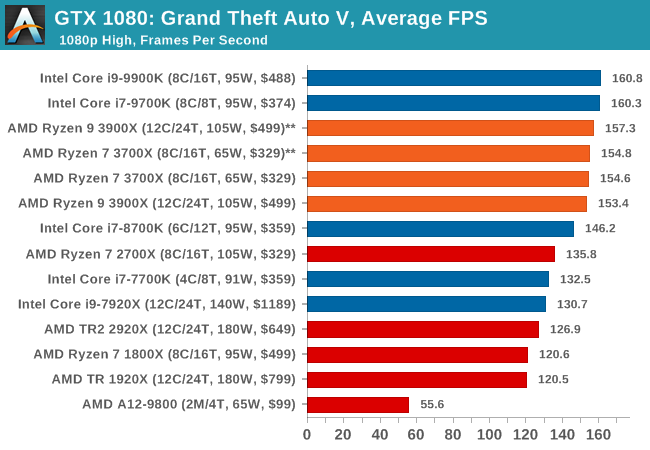
| GTA 5 | IGP | Low | Medium | High |
| Average FPS | 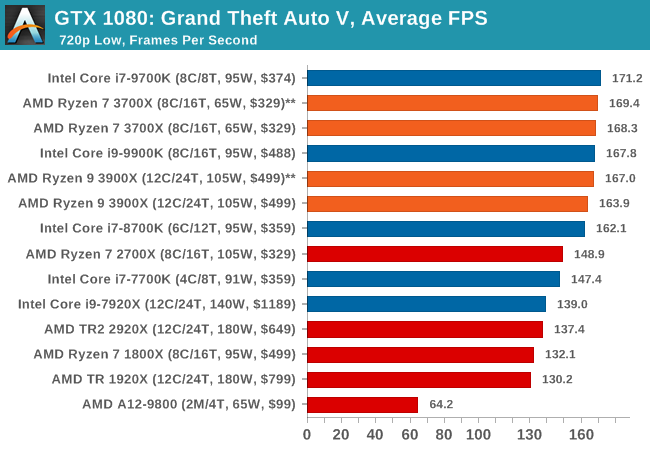 |
 |
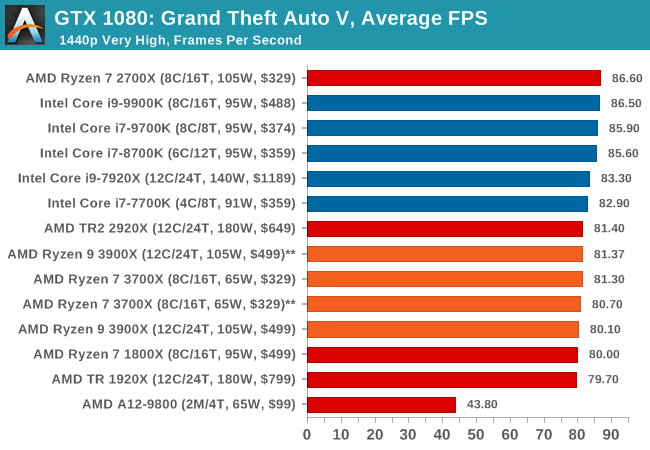 |
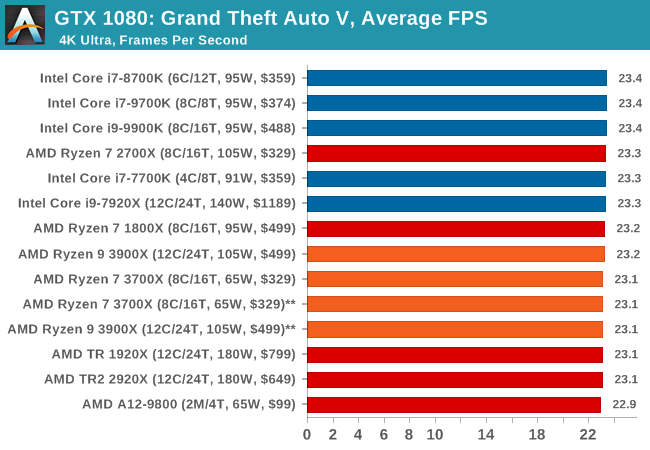 |
| 95th Percentile |  |
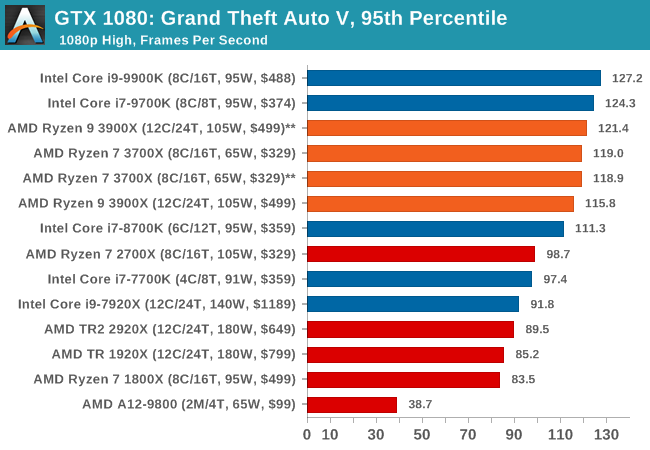 |
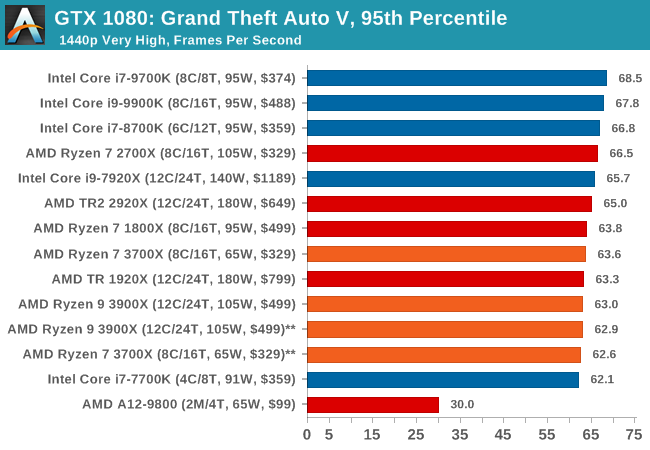 |
 |











447 Comments
View All Comments
RSAUser - Thursday, July 11, 2019 - link
Well, tests of the new AMD card show near no difference for PCIe 4, so no point yet.0ldman79 - Sunday, July 7, 2019 - link
I'm not done yet, but you guys have done an excellent job so far.The only differences I can spot are just in how both of you phrase things, quality is excellent as always.
JustinTeim - Sunday, July 7, 2019 - link
Andrei, What is the status of ECC support for these CPUs ?Yorgos - Sunday, July 7, 2019 - link
He is not even a Dr., to start with.Ian Cutress - Sunday, July 7, 2019 - link
DPhil awarded from Oxford in Computation Chemistry in 2011. (Oxford call it a DPhil, but it is the old term for a Ph.D.)mikato - Thursday, July 11, 2019 - link
I read that as Dr Phil at first. So to be clear, you do not have a Dr Phil degree. I’m not sure what that would be, but I know it would be terrible.XsjadoKoncept - Sunday, July 21, 2019 - link
You'd probably have to be friends with Oprah. Yeck.WaltC - Sunday, July 7, 2019 - link
Hope all is well for the good Dr. Cutress!Oxford Guy - Sunday, July 7, 2019 - link
Yes, like all the results that include the performance regressions on Intel from actually dealing with reality.Reality is that they exist and need to be patched, not ignored.
That includes turning off hyperthreading.
cheshirster - Monday, July 8, 2019 - link
"Dr Ian Cutress as he unfortunately the timing didn’t work out"I bet he just don't want to risk his reputation.